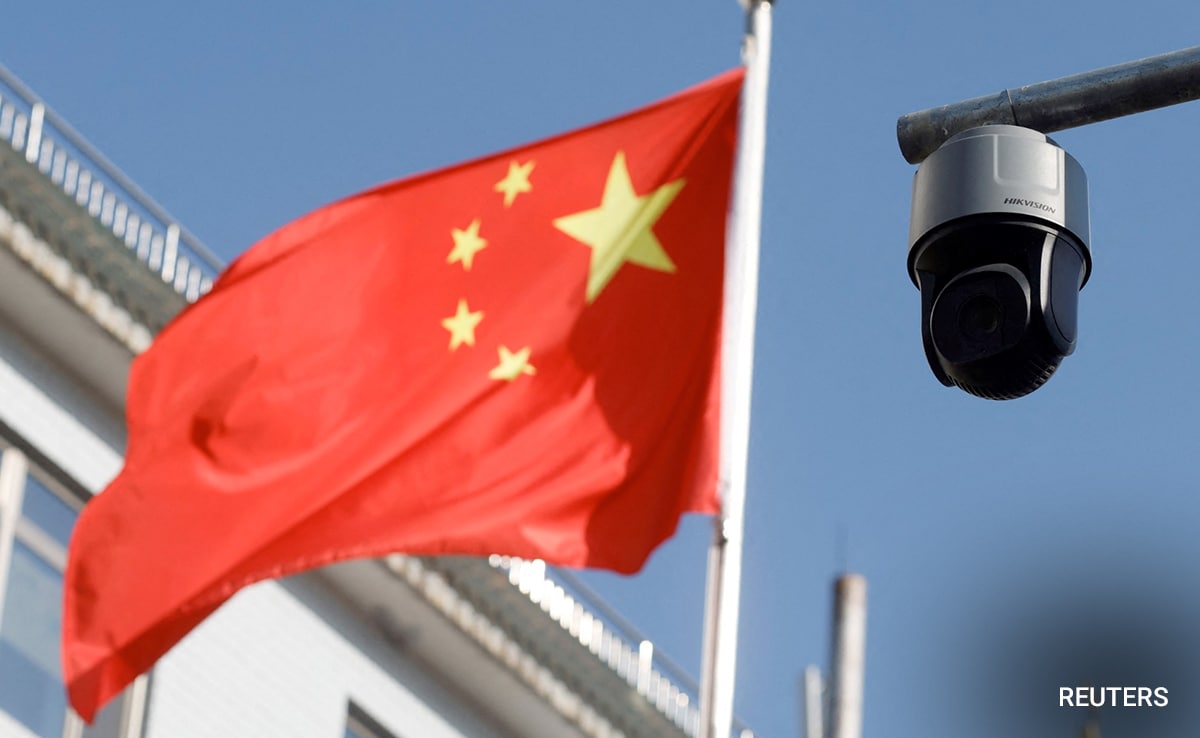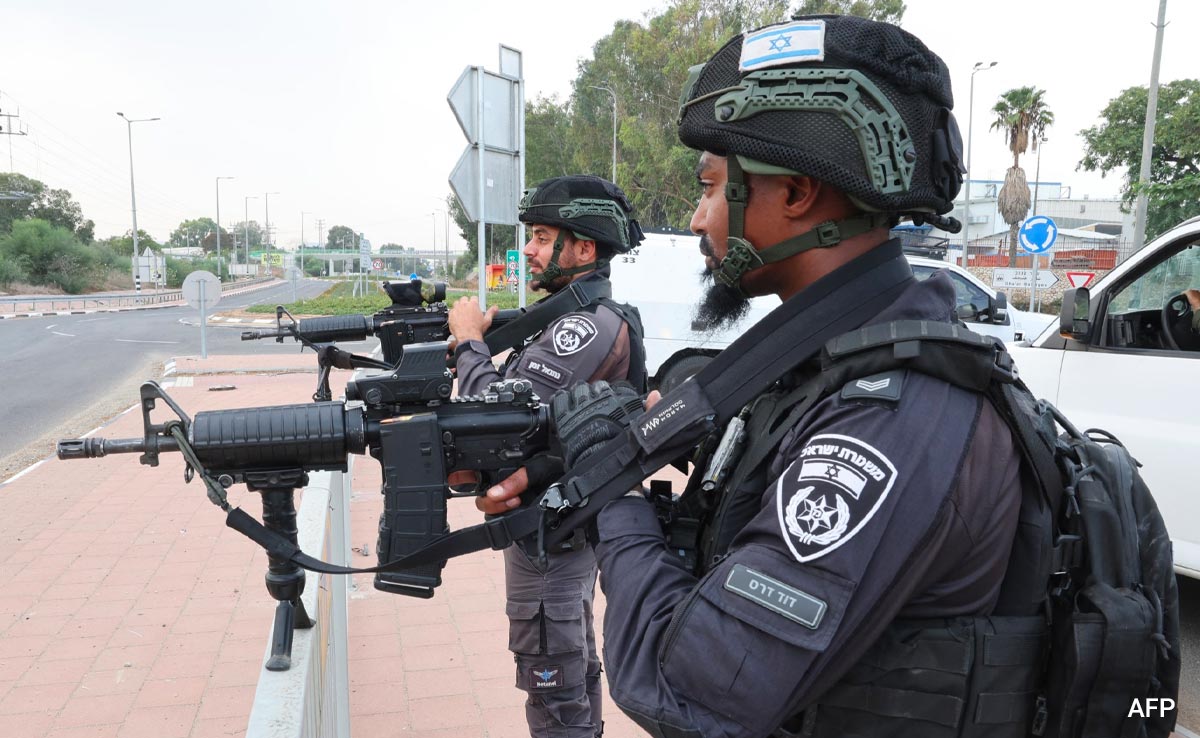This handout photograph released by State Border Service of Azerbaijan on September 27, 2023, shows Ruben Vardanyan, former separatist head of Nagorno-Karabakh, detained by two Azerbaijani security officers.
| Photo Credit: AFP
Azerbaijan said it arrested the former head of Nagorno-Karabakh’s separatist government as he tried to cross into Armenia on Wednesday, following Azerbaijan’s 24-hour blitz last week to reclaim control of the enclave.
The arrest of Ruben Vardanyan was announced by Azerbaijan’s border guard service. It appears to reflect Azerbaijan’s intention to quickly and forcefully enforce its grip on the region after the military offensive that has prompted a rapid exodus of tens of thousands of ethnic Armenians.
Mr. Vardanyan, a billionaire businessman who made his fortune in Russia where he owned a major investment bank, moved to Nagorno-Karabakh in 2022 and served as the head the regional government for several months before stepping down earlier this year.
EDITORIAL | War in Caucasus: On Azerbaijan’s recapture of Nagorno-Karabakh
Azerbaijan’s border guard service said Mr. Vardanyan was escorted to the country’s capital of Baku and handed over to “the relevant state bodies” that will decide his fate. It posted a picture of Mr. Vardanyan held by two border guards next to a helicopter.
Also Wednesday, Azerbaijan’s Health Ministry said a total of 192 Azerbaijani troops were killed and 511 were wounded during the offensive in Nagorno-Karabakh. One Azeri civilian also died in the hostilities, the ministry said.
Nagorno-Karabakh officials said earlier that at least 200 people on their side, including 10 civilians, were killed and over 400 were wounded in the fighting.
The 24-hour Azerbaijani blitz involving heavy artillery, rocket launchers and drones, forced the separatist authorities to agree to lay down weapons and sit down for talks on Nagorno-Karabakh’s “reintegration” into Azerbaijan.
Azerbaijan and separatist officials have since held two rounds of talks, but no details have been made available and prospects of “reintegration” of Nagorno-Karabakh’s ethnic Armenian population into the mostly Muslim country have remained unclear.
Despite Azerbaijan’s promises to respect the rights of the region’s residents, they have rushed to flee the region en masse fearing reprisals.
Over 47,000 people, or nearly 40% of Nagorno-Karabakh’s population of 120,000, have left the region for Armenia as of early afternoon Wednesday, according to the Armenian authorities.
Hours-long traffic jams were reported on Tuesday on the road out of Nagorno-Karabakh as residents hurried to leave, fearing that Azerbaijan could shut the only road leading to Armenia.
Monday’s explosion at a gas station near the region’s capital Stepanakert, where people were queuing to fuel up their cars before leaving for Armenia, killed at least 68 people, according to Nagorno-Karabakh’s human rights ombudsman Gegham Stepanyan. Another 290 were wounded, and a total of 105 were considered missing as of Tuesday evening, he said.
The massive blast exacerbated already dire fuel shortages.
Tatev Mirzoyan, a 27-year-old citizen of Nagorno-Karabakh’s regional capital of Stepanakert who arrived in the Armenian city of Goris with her family after a 28-hour drive, said they used fuel they had stashed for emergency purposes.
“We were seven in one little car,” she said. “That was a horrible journey as people are in panic and nervous.”
Mirzoyan said she and her family are planning to stay with her sister who lives in Yerevan, adding that she doesn’t want to think about the future for now.
Some of her relatives are still searching for fuel to leave Nagorno-Karabakh, she added. “My cousin is still under siege in Martuni, she is waiting to be taken out to Stepanakert, and after that figure out what to do next.”
Also Read: Explained | Why the Azerbaijan-Armenia conflict over Nagorno-Karabakh remains unresolved?
Azerbaijan’s swift onsslaught followed a nine-month blockade of the road connecting Nagorno-Karabakh with Armenia. Armenia charged that the closure denied basic food and fuel supplies to Nagorno-Karabakh’s residents, while Azerbaijan countered by alleging that the Armenian government was using the road for mineral extraction and illicit weapons shipments to the region’s separatist forces.
Nagorno-Karabakh was an autonomous region within Azerbaijan during the Soviet times and it came under the control of ethnic Armenian forces backed by the Armenian military in a six-year separatist war that began in the waning years of the Soviet Union and ended in 1994.
Azerbaijan regained substantial territory, including parts of Nagorno-Karabakh, in a six-week war with Armenia in 2020 that ended with a Moscow-brokered truce and the deployment of 2,000 Russian peacekeepers to monitor the region.
Russia, which has been Armenia’s main sponsor and ally since the 1991 Soviet collapse, has also sought to maintain warm ties with Azerbaijan. But Moscow’s clout in the region quickly faded as Russia’s war on Ukraine diverted Moscow’s resources and made it increasingly dependent on Azerbaijan’s main ally, Turkey.
Kremlin spokesman Dmitry Peskov refused to comment on the arrest of Vardanyan, who renounced his Russian citizenship after moving to Nagorno-Karabakh.














